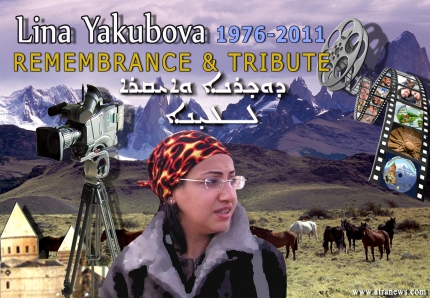Ashur Giwargis – Beirut*
This article is the 1st part of a historical series published in the quarterly “Assyrian Star” magazine, of the Assyrian American Federation in the United States, starting with issue of Spring / 2006. The series deal with six studies on the Assyrian national project in the 20th century.
We read a lot about the Assyrian liberation movement in the 20th century; however, we seldom read about the French intervention and the Assyrian leaders that relied on France and its promises. There are many issues in this particular topic that Assyrian historians and writers prefer not to address because certain aspects of this history aroused, and unfortunately continue to arouse, strong emotions. However, these issues must be recorded in order to preserve historical integrity for present and future generations.
In order to understand the role of the French in the Assyrian liberation movement, it is vital to have an understanding of the Franco-British conflict prior to WWI. For centuries, before the existence of Communism and Capitalism, these two nations had fought each other. The history of Franco-British confrontation reaches back to the 18th century American Revolution and the Napoleonic attempts to rule Europe. These events heralded tenacious and bitter conflicts during the 19th century that resulted in French expansion into Africa and Asia. It was only during the Third Republic (1871–1940), after France had lost its war against Germany (1870), and the latter was united a year later by Otto Von Bismarck, that France came to a certain level of cooperation with the British. But the competition continued.
During WWI France struggled to dominate new territories while fighting Germany and the Ottoman Empire. This new urgent alliance among “Orthodox” Russia, “Anglican” Britain, and “Catholic” France represents strategic considerations as the three realized the alliance was their sole chance to expand their political and economic power throughout the world. The WWI’s attachment to the assassination of Archduke Franz Ferdinand, was fought for three basic reasons:
- Franco-German animosity since 1870
- The need for international markets for Europe’s industrial manufacture in Ottoman controlled markets
- Russian need for access through the Bosphorus and Dardanelles.
For Assyrians, another factor of great importance was the jockeying of these countries to control Assyria during WWI. The sectarian Orthodox-Anglican-Catholic differences among Russia, Great Britain, and France cannot be ignored. Each country competed to position itself as protector of Christians in the Ottoman Empire (Armenians, Assyrians, and others). In 1535, France gained treaty rights to send missionaries into the Ottoman Empire and the struggle began for control of the Church of the East located in strategic regions within the Ottoman Empire. Later, the three powers joined as “Allies” in WW1, needed these Christians’ fighting abilities.
The followers of the Church of the East were easy to manipulate since they were surrounded by Turkish and Kurdish “Jihadist” forces. Once the French-protected Catholic Eastern rite church (Chaldean) became established, whenever a conflict in leadership occurred with the Patriarchal family of the Mar Shimun, a clergyman, a tribe leader, etc., had the option of converting to Catholicism. Their tribe or village followed suit, due to tribal loyalty rather than a reversal of theological position.
Failure of the Assyrian Alliance with Russia and Great Britain
The term “British protection of the Assyrians” was in reality British exploitation. By the early 20th century, British interest in the Assyrians had degenerated into manipulation of Assyrian leadership whose reliance on British promises grew out of external pressures beyond their control. Two critical factors for the over reliance on the British were:
- abrupt Russian withdrawal from Urmia and its periphery in 1917 which left the Assyrians isolated and vulnerable to Turkish and Kurdish attacks
- admission of Iraq into the League of Nations in October 193l thus permitting the Iraqi government and certain leaders who opposed Patriarch Mar Eshai Shimun to defy his leadership on the international stage.
After 1932 the relationship between Britain and Iraq altered to that of two sovereign states. Iraqi- British treaties gave the latter oil concessions that allowed disregard of the massacre of the Assyrians in 1933. This occurred two years after Iraq’s admission into the League of Nations and a few days following house arrest of the patriarchal family inside the YMCA center in Baghdad. They later were exiled in Cyprus. These events occurred with the clear knowledge of the British. They spelled the end of Assyrian revolutionary thought in the Assyrian national movement. Assyrian helplessness in the face of surrounding powerful forces resulted in a depression in the Assyrian national psyche regarding the past and loss of initiative to formulate long tem strategies up to the present.
Penetration of Catholicism into the Hakkari Assyrian Tribes before WWI
What facilitated the French intervention in the Assyrian liberation movement was the conversion of some leading Assyrian families to Catholicism beginning in 1903 in revenge against the Mar Shimun patriarchal family. Nimrod Beg was the elder of one such family, itself a branch of the patriarchal family. A conflict had arisen over the See of the patriarchate and the French took advantage of this inner family feud, something very difficult to ameliorate in the past among these “stubborn tribes” – as described by western missionaries.
France sent the French Vice Consul in Van Vilayet, also known as “Le Père De France” (The French Father), on August 28, 1902 to Qudshanis, the See of the Patriarch, to meet with Mar Rouel Shimun who, however, refused to deal with him. The French official left for the Gawar region and met with Awishalim, Nimrod’s brother, who took him to Nimrod in Khanasis. The two made an agreement for the protection of the “future Chaldeans”. The French official contacted the council-Friar in Van requesting French protection from Kurds for Nimrod’s followers and monetary assistance. (Coakley, p. 257)
When Patriarch Mar Rouel Shimun passed away (March 29, 1903), in accordance with centuries-old traditions, his nephew, Mar Benyamin Shimun, was consecrated patriarch. Nimrod, his cousin Youkhana, and Youkhana’s son Yousip traveled to Mosul where they met with Mar Emanuel, the Patriarch of the Chaldean Church and broached the issue of their conversion to Catholicism. Upon agreement, Nimrod and his followers were immediately welcomed as new converts. Among them was Mar Esho’-Yab, the bishop of Duri region. (Coakley, p. 259)
This was Nimrod revenge on the patriarchal family for not choosing a member of his immediate family as patriarch. The repercussions reverberated for decades. The Catholic Mission in Van played a major role in this affair. (Matviev, pp. 75-76). Nimrod continued to challenge the Patriarch: he objected to the decision of the Assyrian leadership to enter the Great War on the Allies side in 1914, “fearing for their future” as he put it, despite the fact that massacres against Assyrians by their neighbors had occurred for centuries with or without Assyrian alliances with the West. In fact, Nimrod himself had requested French protection in 1902.
In 1914 a tribal group loyal to the Patriarch murdered most of the Nimrod family. Nimrod loyalists accused Patriarch Mar Benyamin Shimun of ordering the killings despite the assurances of the Patriarchal family and eyewitnesses that the Patriarch was not involved. Indeed, the Mar Binyamin family was shocked and angered at news of the killings. (YG)
The animosity of Nimrod loyalists and family members towards the patriarchal family remained for a long time to come. An effort to bring peace between the two sides through the time-honored arrangement of marriage fell apart. Theodoros d’ Mar Shimun (a nephew to Mar Benyamin and a brother of Mar Eshaia Shimun) and Bahija (granddaughter of Nimrod through his daughter Shoshan’s marriage to Malik Kambar) were to wed. As their wedding was about to take place, and many Iraqi, British, and world emissaries were set to attend the ceremony near the temporary See of the Patriarch on Musa Shukr road in the Dawwasa quarter of Mosul, the bride’s family, at the last moment, told the groom’s family, that the marriage must be in a Catholic Church and in accord with Catholic creed. The failed wedding caused embarrassment to the Patriarchal family. Thus, a new problem arose and the attempt for peace between the two families failed (YG).
Malik Kambar and French Intervention
A charismatic Assyrian leader, Malik Kambar Warda of Jilu, the son-in-law of Nimrod, appeared in 1918 with a new scheme as an alternative to the British plan for the Assyrians. Kambar was a Catholic Assyrian (Chaldean) to whom France promised the establishment of a self-ruling Assyrian protectorate in the Syrian Jazira region. France commenced communications with Malik Kambar through the Chaldean Catholic Church, the normal conduit of Rome and France with Assyrians.
After the flight of many Assyrian refugees from Urmia to Georgia and Armenia in 1918, Malik Kambar, had settled in Georgia with 170 families from his tribe. Here, he commenced relations with Georgian officials as the spokesman for the refugees. Later he traveled to Istanbul and there met Fr. Petros Ubaid of the Chaldean Church. Twenty days later, the French High Commissioner to Syria and Lebanon, General Gouraud, invited Malik Kambar to Beirut where he duly arrived on July 7, 1920. He was met by the General’s advisor, Colonel Knonish, and Monsignor Mansour Koryakos, the head of the Chaldean Catholics in Lebanon. At the next day’s meeting with Malik Kambar, General Gouraud told the Assyrian leader that France had decided to give the Mardin and Jazira regions to the Assyrians and to put him in charge of the whole scheme. He asked Malik Kambar to go back to the Caucasus and enlist Assyrian soldiers and bring them and their families to the Jazira, all at French expense.
Malik Kambar immediately set out for the Caucasus, met Dr. Victor Yonan, his assistant Gorial Darro, Fr. Lazar Giwargis and other notables of Urmia/Salamas. He told them about the French decision. The transfer of Assyrians to Jazira via Iskandarun (now Hatay in Turkey, then a Syrian province) began forthwith. The enlisted Assyrians were put under Captain Hariot. Malik Kambar traveled to Armenia, met with the Assyrians in Arzin, Dogun, and Kuylasar and succeeded in enlisting 450 men but could not transport them immediately due to the turmoil of Bolshevik fighting. However, he and eight of his assistants continued on to Tiflis in Georgia. There he met Colonel Korbal, French Army commander in Tiflis, and enlisted more Assyrians. Heavy fighting between the Red and White Russian armies forced Malik Kambar to end his mission and travel back to Syria to put in motion the project in Jazira.
Internal Struggle: The Mar Shimun family, Agha Petros, Malik Kambar
During this time, Malik Kambar’s attitude toward other Assyrian leadership became known. He wrote to Assyrian representatives at the Paris Peace Conference (December 30, 1920) insinuating that the patriarchal representative, without mentioning Lady Surma by name, had betrayed the Assyrians: “They sold their nation and filled their pockets at the expense of our children and stayed in luxurious hotels in London...” (MK). It is important to mention here that the British had impeded her departure for Europe and then had insisted that she remain in London and not go to Paris. In one of the darkest hours in the modern history of the Assyrian nation, while Patriarch Mar Polous Shimun was at the point of death in Mar Mattay Monastery, and Lady Surma in London, British manipulation furthered the gap already existing between Agha Petros (The political ally of Malik Kambar) and the Patriarchal family by encouraging him to take the Assyrians and go back to Hakkari to fight the Turks and the Kurds, again accompanied by the Assyrian refugees (Malik Yaco, p. 156-157). A year later, the sickly Mar Polous Shimun, consecrated in 1918, died, and a twelve year old nephew, Mar Eshai Shimun, was elevated to the head of the church, a move opposed by Agha Petrus and Malik Khoshaba who received support from British Lt. Colonel Cunliffe Owen, the commander and the general supervisor of Assyrian refugees camps, even though such a youthful consecration had precedence in Assyrian custom and law. Finally, the opposition was defeated and the young Patriarch was aided in his duties by a regency arrangement. (Theodoros Mar Shimun, p: 146).
French Plans to Divide the Assyrians Front
Despite his opposition to Assyrian leadership by the Mar Shimuns (stemming from the murder of his father-in-law Nimrod in 1914) Malik Kambar was a courageous leader. He organized his troops in Jazira with the help of Captain Hariot, and lieutenants Marandin and Philippot. Assyrian volunteers rallied to this force from various denominations and regions. Some were refugees originally from Urmi who had fled to the Caucasus, or Church of the East members of the Jilu and other Hakkari tribes. Others belonged to traditional west Assyrian communities (ma’riwaye) belonging to the traditionally monophysite Assyrian orthodox church. The latter had fled from the towns and villages of Tur-Abdin and especially the Mardin district. General Gouraud plan included the Mardin district for inclusion in the Assyro-Chaldean Protectorate.
Through this Assyrian force, Malik Kambar was able to control the Jazira region, something that incited the Muslim Arab tribes against Assyrians, as happened also in Iraq. He invited other Assyrian leaders in Iraq, including Agha Petros, to come to Syria. The British became concerned at these events in Jazira, as reflected in the letter of the British High Commissioner Sir Percy Cox (April 22, 1921) to G.H.Q. and the Director of Repatriation in Mosul. He accused Agha Petros of collusion with the French. His confidential letter states: “I have reason to suspect that the French Government is about to ask that the Assyrians be invited to settle between Mardin and Jazira, and it is rumored that certain of the Assyrian leaders have been heavily bribed to secure their consent” (Dadesho, p.78). The British began to restrict the movement of Agha Petros and Mar Sargis, the Bishop of Jilu, fearing they would move all Assyrians to Syria. In part to prevent such an independent move, the British later exiled Agha Petros (refuge given by France) while Bishop Mar Sargis abandoned the Mar Shimun in favor of the Iraqi Government.
The French were not interested in all of this. All they wanted, as stated by General Gouraud was: “To enlist an effective military force to protect the borders by the Assyro-Chaldeans who are willing to give their lives for sake of France” (General Gouraud, p: 12, 17, 18, 19).
Worthy of note is the first use of the term “Assyro-Chaldeans” in 1919-1920 at French insistence. This title came into use by France at the request of the Chaldean Catholic Church leadership in Beirut who presented the request to General Gouraud in person. The Catholic missions in Aleppo, Mosul, and Mount Lebanon supported the request. The pro-France Assyrian leadership, including Agha Petros, were obliged to use this title for fear of Vatican and French withdrawal of support at international conferences. In his letters to the British, however, Agha Petros used “Assyrian” exclusively thereby giving proof of French pressure.
End of the Dream
On July 24, 1922, the League of Nations awarded France the mandate in Syria and Lebanon while Britain got Iraq, Palestine, and the Trans-Jordan mandates. Soon thereafter, France dissolved “The Assyro-Chaldean Battalion” and merged it into the French Foreign Legion. The French no longer needed Assyrian self-rule in Jazira and all the efforts of Malik Kambar had gone to waste.
Disappointed, Malik Kambar left for Lebanon where Assyrian residents refused to go to Syria, and from there he traveled to France where he joined Agha Petros. They worked together on the Assyrian question at international conferences, especially at Lausanne in 1923 and Geneva in 1924, but with no success due to the bargaining between the ex-allies with Turkey and Iraq. During all the international conferences, the most simple and basic rules of equality and international justice, as stated in international law: “A dwarf is as much a man as a giant; a small republic is no less a sovereign state than the most powerful kingdom” (de Vattel) … wasbroken.
Conclusion:
Regardless of French and British desires during those critical times for the Assyrian nation, Assyrians themselves didn’t act as a solid unit; personal hatred and tribal revenge controlled Assyrian action. Their so-called “allies” and their enemies manipulated these weaknesses. The persecution and marginalization of the Assyrian nation continuous to date because of these kinds of internal Assyrian problems.
Ashur Giwargis is an Assyrian resident of Lebanon, born in Beirut (1970). His family fled Iraq during the massacres of Assyrians that took place in north of Iraq in 1933. He has many published articles concerning the Assyrian political cause and history in Assyrian and Arab newspapers and websites, he established “Assyria Patriotic Movement” in 2012.
References:
1- Archives
MK (Malik Kambar d-Malik Warda of Jilu archives held in the family and left with his sister, the late Helen d-Malik Warda.) The author is grateful for access to these privately held materials.
YG (Notes of Younathan Giwargis, the author’s grandfather, who was from the clan of Mar Sliwa of the Jilu tribe [Mar Zayya Village]. He was studying at the Mar Shimmun house in Qudshanis in preparation for becoming the bishop of Gawar [Mar Sliwa’s seat]. He was an eyewitness to the reaction of the Patriarchal family at the killing of Nimrod. Later he was at the Patriarchal house in Mosul as preparations for the marriage of Theodore and Bahija were underway.)
2- Secondary Sources
J.F. Coakley, The Church of the East and the Church of England. Oxford 1992.
K. Petrovitch Matviev, Al-Ashuriyyoun Wal Mas’ala L’Ashuriyya Fil Asr L’Hadith (The Assyrians and the Assyrian Question in Modern Era), Arabic Ed. From the original Russian, 1989.
Malik Yaqu d- Malik Ismael,. Atourayeh woo Tre Plasheh Tiwilayeh (Assyrians and the Two World Wars) Tehran, Iran, 1964.
Theodoros Bet Mar Shimun, Tashiita D’Yubala D’Pateriarkeh Mar Shimouneh (The History of the Shimunite Patriarchs family) n.d
Sargon Dadesho, The Assyrian National Question at the United Nations (Modesto, California, 1987)
General Gouraud, La Question Assyro-Chaldeenne – etudes ET notes, 1920 – 1921.
Emer de Vattel, The law of nations, or, Principles of the law of nature, applied to the conduct and affairs of nations and sovereigns (Originally published: London: S. Sweet, 1834) Article 18: Equality of Nations.




